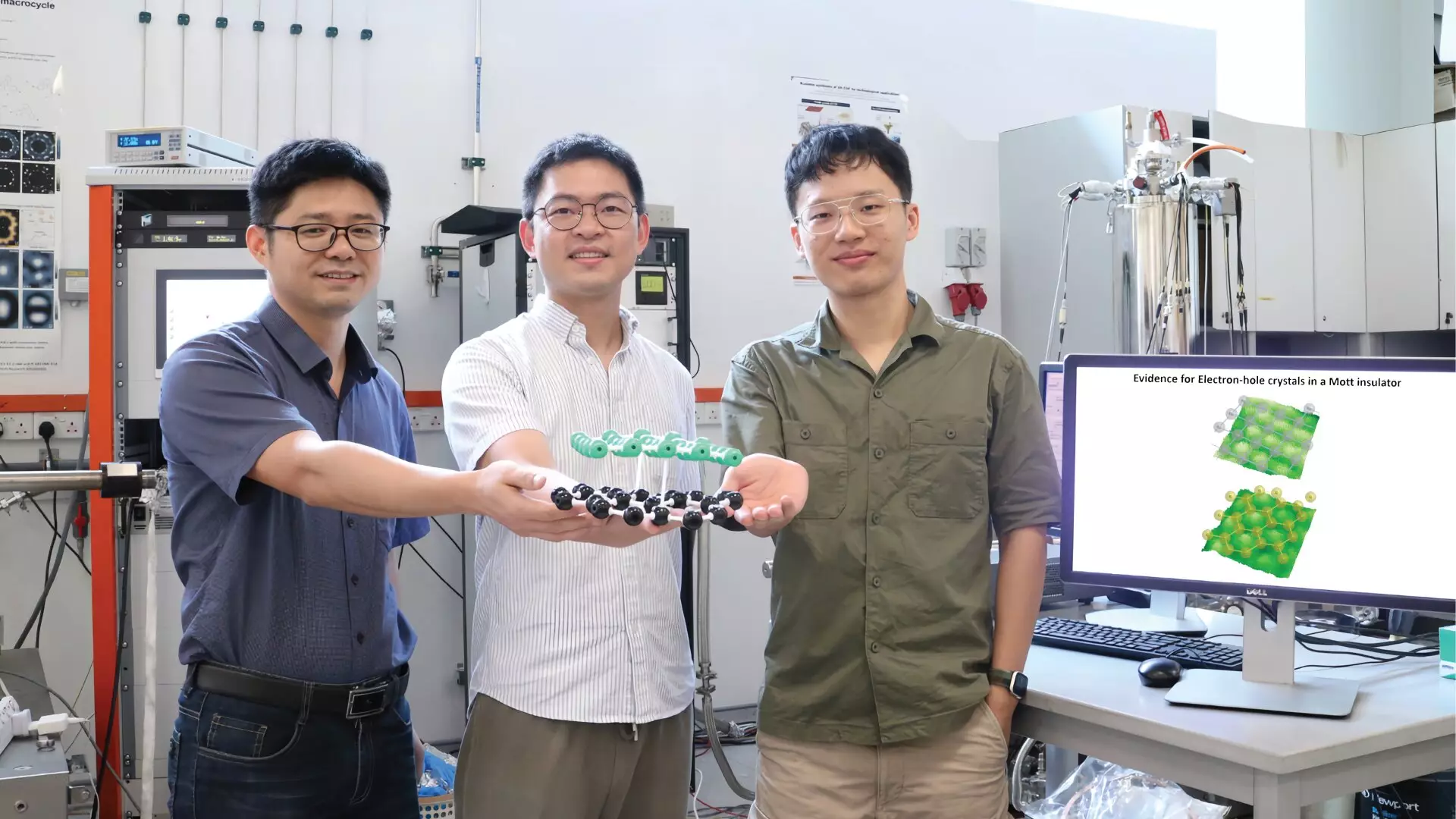In the fascinating realm of condensed matter physics, electron interactions have always captivated researchers. When electrons are plentiful enough to inhabit the lattice sites of a material, they can organize into an ordered arrangement, termed an electron crystal. This ordering isn’t just a trivial phenomenon; it reflects a collective behavior among electrons that can potentially revolutionize quantum simulations and technologies. Such orderly patterns allow scientists to probe the depths of quantum mechanics and explore new states of matter, which could lead to groundbreaking advancements in fields like quantum computing.
The dynamics become even more intriguing when both electrons and their corresponding “holes” coexist in a single system. This unique configuration can generate exotic quantum states, including a remarkable form of counterflow superfluidity. In such scenarios, electrons and holes can traverse a material in opposing directions without experiencing resistance or energy loss. Yet, maintaining the stability of electron-hole pairs is fraught with challenges. These particles tend to recombine rapidly, complicating efforts to keep them distinctly organized.
Innovative Solutions to an Age-Old Problem
To tackle the recombination issue, researchers have experimented with separating electrons and holes into different layers or materials. While layered structures have shown potential for demonstrating electron-hole states, achieving this in natural, unaltered materials remains contentious among scientists. The obstacles stem from the limited experimental evidence and the difficulties associated with identifying suitable exotic quantum materials that can sustain these states without them neutralizing each other.
This problem’s latest chapter was written by a research team from the National University of Singapore (NUS), whose groundbreaking work revealed the formation of electron-hole crystals in a novel quantum material: a Mott insulator known as Alpha-ruthenium(III) chloride (α-RuCl₃). This significant advancement heralds new opportunities for investigating quantum excitonic states created by coexisting electrons and holes. The implications could ripple through computing technologies, particularly in-memory computing and quantum computing, which promise to redefine our digital landscape.
Revolutionary Techniques: Scanning Tunneling Microscopy
A crucial aspect of the NUS researchers’ success was their use of scanning tunneling microscopy (STM), a sophisticated technique that enables visualization at the atomic level. STM harnesses the principles of quantum tunneling to generate real-space images; however, its traditional application is limited to conductive materials rather than insulators. The NUS team overcame this limitation through an innovative experimental setup that combines graphene, a single layer of carbon atoms celebrated for its conductivity, with α-RuCl₃.
The integration of graphene serves a dual purpose. It acts as a conductive medium, allowing electrons to traverse it and interact with the underlying Mott insulator, while also functioning as an adjustable electron source. This capability allows for non-invasive doping of α-RuCl₃, significantly enhancing the ability to study the electronic structure beneath the graphene layer.
Through STM, researchers observed two distinct ordered patterns corresponding to different energy states of α-RuCl₃: the lower Hubbard band and the upper Hubbard band. These states exhibited unique periodicities and symmetries, underscoring the complexity of electron interactions in the material. By adjusting carrier densities in the system using electrostatic gating, the team could directly visualize transitions between these ordered phases, revealing the presence of crystals formed by the coexisting electrons and holes.
Groundbreaking Insights and Future Directions
The observation of electron-hole crystals at the atomic level is a monumental breakthrough, presenting a vivid and detailed glimpse into their structural nuances. What was once hypothesized in earlier mesoscopic studies is now conclusively evident, affirming the potential for uneven distributions of these crystals, characterized by varying concentrations of electrons and holes.
Associate Professor Lu Jiong, who spearheaded the research, expressed enthusiasm for the unexpected discovery, which illustrated two distinct orderings emerging simultaneously in a doped Mott insulator—an occurrence that deviates from prior expectations. The immediate goal is to control these electron-hole crystals through electrical signals, aiming to unlock their potential further. Such control could lead to materials capable of rapidly transitioning between different states, thereby paving the way for advanced computational technologies.
The implications of these findings extend beyond computer science. They may open pathways for innovative materials capable of simulating complex quantum phenomena, bridging the gap between theoretical physics and practical applications. As researchers like Associate Professor Lu continue to delve into the extraordinary behavior of electron-hole crystals, the quantum world promises a treasure trove of revelations that could change the fundamental fabric of technology and science as we know it.


Leave a Reply